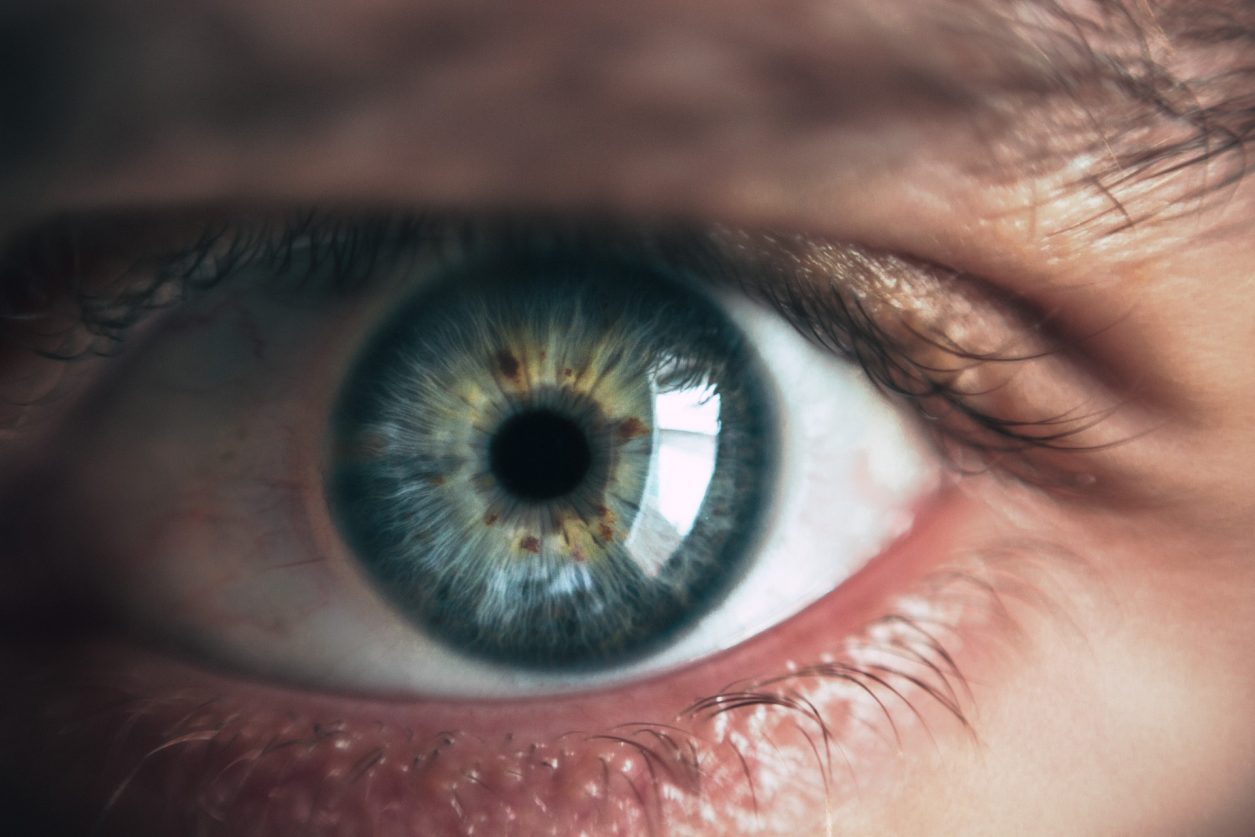Whether we are teleconferencing for work, homeschooling, virtually connecting with family and friends, watching television, streaming, or gaming, screen time has become a necessary fixture in our daily routines especially with the current pandemic recommendations on social distancing. We certainly need our digital devices! However, this increased exposure to digital screens and the blue light, which emits from them, has raised health concerns, especially for our eyes.
Blue Light Health Concerns
Excessive blue light exposure from digital devices has been linked to eye health concerns such as digital eyestrain, difficulty focusing, dry eye, blurred vision and light sensitivity. While currently there is no evidence, thus far, linking blue light to permanent vision loss or blindness, the impact of blue light, especially on children, may have a similar or greater effect on vision because their eyes are still developing and may be more sensitive to exposure. There is even some preliminary data indicating that screen time could contribute to hyperactivity and decreased attention spans.
A Frontline Defense
How can we protect against blue light exposure given our unavoidable dependence on digital devices? Though many people may think that blue blocking glasses or screen filters are good enough, the two most effective ways to protect against blue light exposure are actually proper nutrition and supplementation.
Nature has provided our eyes with internal blue light protection—three pigments called lutein, zeaxanthin and meso-zeaxanthin. Collectively referred to as the macular carotenoids, these three pigments are found in high concentrations within the macula, or central retina. These pigments act as a frontline defense against potentially harmful blue light by filtering these high-energy, short wavelengths. Out of all three pigments, meso-zeaxanthin, is the most potent of the macular carotenoids because of its powerful antioxidant capability.
Nutrition Challenges
Because our bodies cannot make these protective pigments, which our eyes need, we must get them as nutrients, either from our diet or from supplementation.
Lutein and zeaxanthin come from plants that are found abundantly in dark green, leafy vegetables (e.g. spinach, kale, collard greens, and romaine lettuce), yellow and orange bell peppers, cilantro, and parsley. Corn is also rich in lutein and zeaxanthin. Additionally, a rich source of zeaxanthin comes from the spice, paprika.
Obtaining sufficient amounts of the macular carotenoids from diet alone can be challenging. According to The Centers for Disease Control and Prevention, only 10% of American adults eat the recommended amounts of fruits and vegetables, while only 9% of America’s youth eats the recommended amount of fruits and 2% eat the recommended amounts of vegetables each day. Another hurdle is, unlike lutein and zeaxanthin, the carotenoid meso-zeaxanthin is not readily found in high quantities in foods.
Filling The Gap
Recommended intake and clinical research indicate the optimum levels of lutein are at least 6-20 mg/day and of zeaxanthin are 1-4 mg/day. However, most people on a western diet usually get only 1-2 mg of lutein daily and less than 1 mg of zeaxanthin. Thus, many people are deficient in these important eye health nutrients. To fill the gap, supplementation provides an easy way to protect the eyes against blue light exposure.
There are a wide variety of eye health supplements available on the market and each has a different formulation, making it difficult to choose. Many only contain two out of the three pigments – often lacking meso-zeaxanthin. Read labels carefully and look for an ingredient called Lutemax 2020 that includes all three of these macular carotenoids – lutein, zeaxanthin, and meso-zeaxanthin. The ingredient is a natural extract of marigold flowers and provides all three nutrients in the same 5:1 ratio as is found naturally in the diet. In addition, there is strong science to back its benefits for improvements in multiple measures of visual performance and improved sleep quality.
Digital Life Is The New Normal
Our society’s dependence and need for digital technology has accelerated significantly during the current pandemic. Extended screen time is now our “new normal” for everyone including children. With this increased screen time remaining a new way of life long after the pandemic, let’s be proactive when it comes to safeguarding our eyes from blue light, as well as ensuring optimal visual performance despite our digital demanding life.
Dr. Rudrani Banik, MD is a board-certified ophthalmologist specializing in an integrative approach to vision health and author of, The Macular Degeneration Prevention Protocol. She is also a fellowship-trained neuro-ophthalmologist. Banik is the founder of Envision Health NYC, a concierge practice specializing in eye health, neurological conditions, and migraine headaches. She is Associate Professor of Ophthalmology at Mount Sinai Icahn School of Medicine. Banik is a member of the American Board of Ophthalmology’s Exam Development Committee and contributes to setting the standards for board certification. She has committed herself to 13 years of training at some of the finest medical institutions like Brown University and John Hopkins, allowing her to author numerous articles and present at national and international meetings.
Twitter: @RudraniBanikMD
Facebook: www.facebook.com/NYCNeuroOphthalmology
Instagram: https://www.instagram.com/dr.ranibanik/
Website: https://rudranibanikmd.com




















